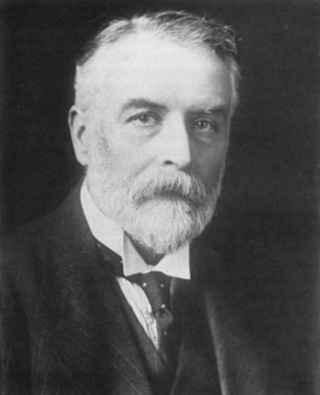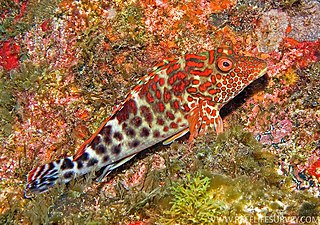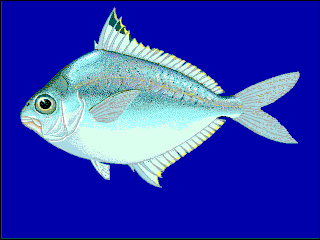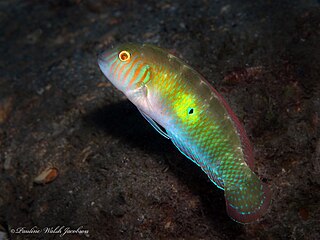
Charles Tate Regan FRS was a British ichthyologist, working mainly around the beginning of the 20th century. He did extensive work on fish classification schemes.

George Albert Boulenger was a Belgian-British zoologist who described and gave scientific names to over 2,000 new animal species, chiefly fish, reptiles, and amphibians. Boulenger was also an active botanist during the last 30 years of his life, especially in the study of roses.
Victor Gruschka Springer was an American biologist who was a Senior Scientist emeritus, Division of Fishes at the Smithsonian Institution's National Museum of Natural History in Washington, D.C. He was a specialist in the anatomy, classification, and distribution of fishes, with a special interest in tropical marine shorefishes. He published numerous scientific studies on these subjects; also, a popular book called "Sharks in Question, the Smithsonian Answer Book" 1989.
Britski's catfish is a tropical freshwater fish belonging to the subfamily Corydoradinae of the family Callichthyidae native to South America where it is found in the upper Paraguay River basin in Brazil. This species was formerly classified as Brochis britskii.
George Sprague Myers was an American ichthyologist who spent most of his career at Stanford University. He served as the editor of Stanford Ichthyological Bulletin as well as president of the American Society of Ichthyologists and Herpetologists. Myers was also head of the Division of Fishes at the United States National Museum, and held a position as an ichthyologist for the United States Fish and Wildlife Service. He was also an advisor in fisheries and ichthyology to the Brazilian Government.
Maurice Kottelat is a Swiss ichthyologist specializing in Eurasian freshwater fishes.
Peter Robert Last is an Australian ichthyologist, curator of the Australian National Fish Collection and a senior principal research scientist at CSIRO Marine and Atmospheric Research (CMAR) in Hobart, Tasmania. He is an elasmobranch expert and has described many new species of shark.
Gerald Robert "Gerry" Allen is an American-born Australian ichthyologist. His career began in 1963, when he spent a semester at the University of Hawaii, where he also received a PhD in marine zoology in 1971. In 1972, Allen wrote his doctoral thesis on the systematics and biology of the anemone fish.

The splendid hawkfish, also known as mottled hawkfish, is a species of marine ray-finned fish, a hawkfish belonging to the family Cirrhitidae. It is found on tropical reefs of the Pacific Ocean.

Eubleekeria is a genus of marine ray-finned fishes, ponyfishes from the family Leiognathidae which are native to the Indian Ocean and the western Pacific Ocean.
Acropoma hanedai is a species of ray-finned fish, a lanternbelly from the family Acropomatidae. It occurs in the north-western Pacific Ocean from southern Japan to Taiwan. It is a food fish which is caught by trawling.
Acropoma lecorneti is a species of ray-finned fish, a lanternbelly from the family Acropomatidae. It is found in the western Pacific Ocean where it has been recorded off Japan and New Caledonia. This species was first formally described by the French ichthyologist Pierre Fourmanoir (1924-2007) with the type locality given as north of the St Vincent Pass off the western coast of New Caledonia at a depth of 360 metres (1,180 ft). The specific name honours the skipper of the fishing boat Thalassa, Monsieur Lecornet, who took the type aboard that vessel.

Manonichthys is a genus of ray-finned fishes from the subfamily Pseudochrominae, which is one of four subfamilies in the dottyback family Pseudochromidae. They are found in the tropical eastern Indian Ocean and the western Pacific Ocean. Many of the species of Manonichthys live within the bodies of large sponges, the genus name references the Greek word for a kind of sponge, manon, in combination with the Greek word for "fish", ichthys.
Helen K. Larson is an ichthyologist who specialises in the fishes of the Indo-Pacific.
Phillip Clarence Heemstra was an American-South African ichthyologist. He was born in Melrose Park, Illinois, United States as the son of Clarence William Heemstra and his wife, Lydia. He attended school in Ottawa, Illinois, and completed a B.Sc. Zoology in 1963 at the University of Illinois at Urbana, Illinois, as well as his MSc degree (1968) and doctorate (1974) in marine biology at the University of Miami in Miami, Florida. He moved to live in South Africa in 1978.
Nikolai Vasilyevich Parin was a Soviet and Russian ichthyologist, specializing in oceanic pelagic fish. He headed the Laboratory of Oceanic Ichthyofauna at the RAS Institute of Oceanology in Moscow, where he ended his career as a Professor after more than fifty-seven years. In his career, he described more than 150 new taxa of fish and participated in 20 major oceanic expeditions. Thirty-six species of fish are named in his honour.

Xyrichtys splendens, the green razorfish, is a species of marine ray-finned fish from the family Labridae, the wrasses. It is found in the western Atlantic Ocean.
Acropoma heemstrai is a species of ray-finned fish in the genus Acropoma. A small sample was found in South Africa and Mozambique.

The Tropical lanternbelly, Acropoma leobergi is a species of the genus Acropoma described as having a luminous behind the anus that resembles a "U" in shape. The species is native to the Arafura Sea.
Acropoma musorstom is a species of bioluminescent lanternbelly found in Vanuatu.






